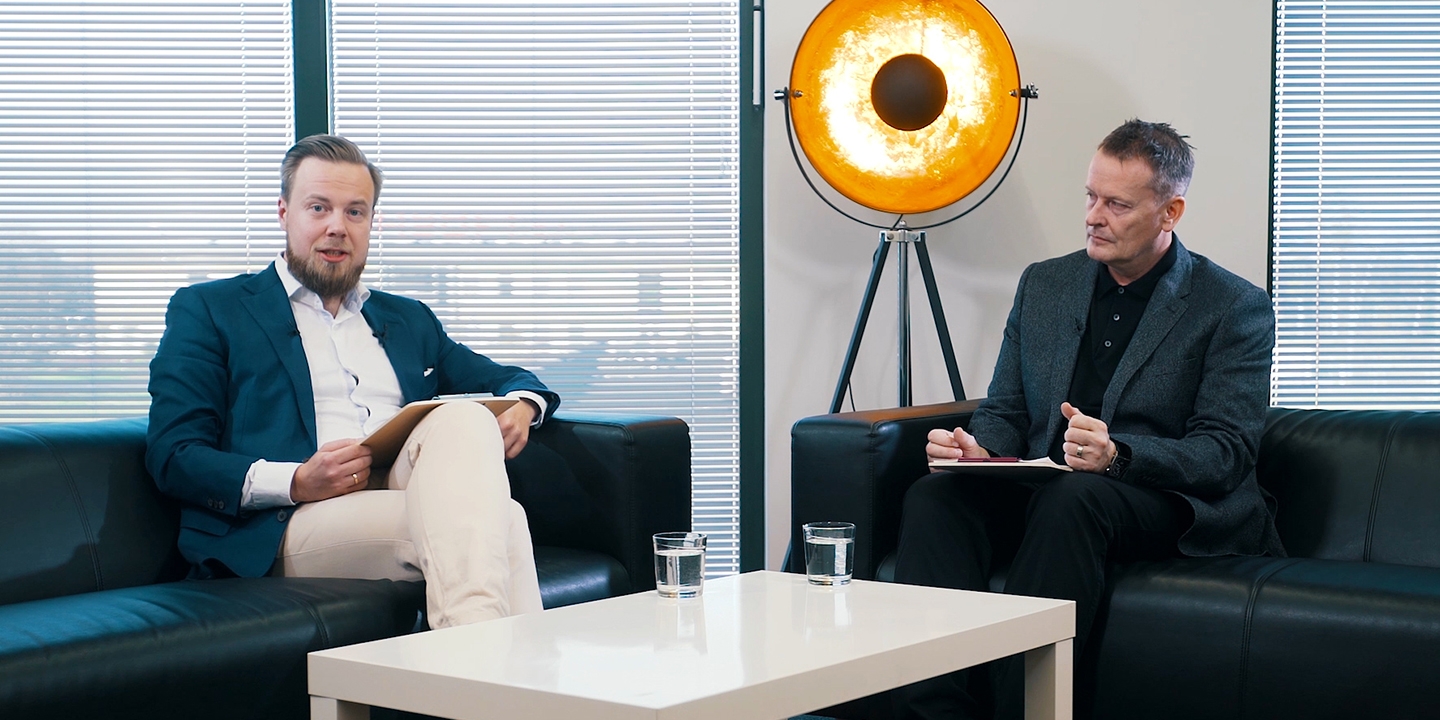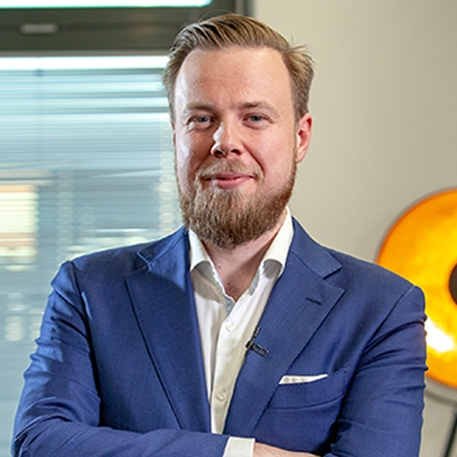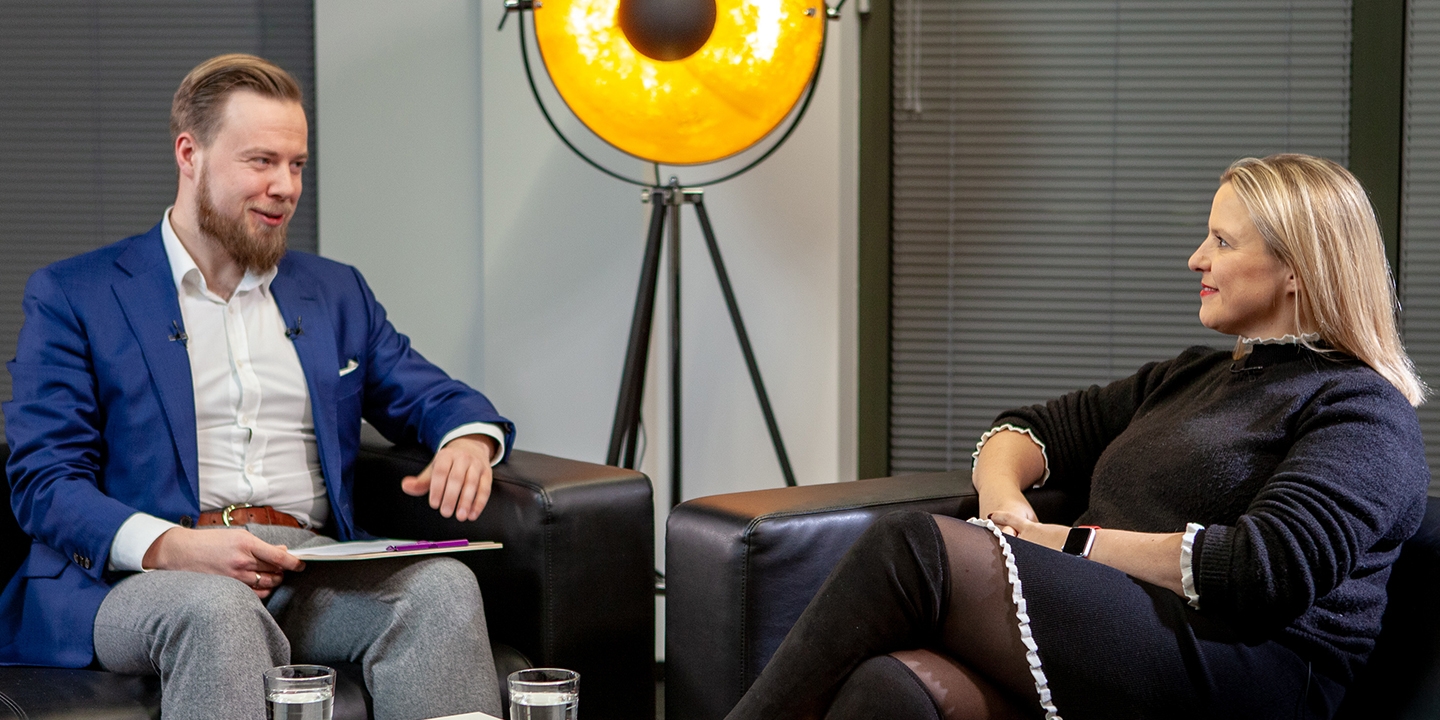- Insights hub
- /
- The Latest Trends in the ...

The Latest Trends in the IT Outsourcing Market with Tom Quigley
- DetailsAbout the talks
- TranscriptTranscript
- Resources4 Files
The Latest Trends in the IT Outsourcing Market with Tom Quigley
Jarosław Granat
Head of Client Engagement at Future Processing
In this episode of IT Leadership Insights, Jarosław Granat speaks to Tom Quigley about the latest trends in IT outsourcing.
Tom explains how the reasons for IT outsourcing have changed as the sector developed over the years. He also discusses what shapes the IT outsourcing industry in terms of tech and non-tech factors and shares his predictions for the market.
Our Guests:
Tom Quigley has spent 20 years working as a marketer in the outsourcing industry; initially for one of the largest BPO providers in the UK, then as marketing director for the Global Sourcing Association, before setting up his own marketing agency servicing CEE businesses. He is also the CEO of Emerging Europe Alliance, a member coalition for innovation and technology companies, and sits on the International Association of Outsourcing Professionals’ (IAOP) European Outsourcing Council.
Jaroslaw Granat is Future Processing’s Head of Client Engagement, working to ensure the highest level of services for the company’s clients. He is a graduate of Computer Sciences and Psychology in Business and has worked in IT for the last 10 years.
Jarosław Granat (JG): Hello, and welcome to IT Leadership Insights by Future Processing. This is programme is for CIOs and senior IT executives, who struggle with meeting their business needs with their current IT department, and are considering nearshoring as a solution.
Just to remind you, we’re talking with business experts, industry experts, marketers, consultants, to get their perspective on IT outsourcing. My name’s Jarosław Granat, and the topic of today’s discussion is the latest trends in the IT outsourcing market. And I cannot think of a better guest to talk about this topic than Tom Quigley, the CEO of Emerging Europe Alliance for Business Services, Innovation, and Technology, and the Chief Marketing Officer of Quigley Media, a marketing agency from the UK.
JG: Hello, Tom.
Tom Quigley (TQ): Hi.
JG: Tom, you’ve worked in the IT outsourcing industry for a while, haven’t you?
TQ: Yep. Yep, indeed.
JG: So what are your experiences, what you did you do?
TQ: So we’ve predominantly been on helping buyers and service providers connect with each other, share knowledge, help buyers understand what’s coming over the horizon.
JG: Okay.
TQ: And put the service providers in the best position possible to help them engage with the buyers, and help them provide solutions.
JG: All right, perfect. So to start the discussion about the trends in outsourcing, let’s talk about the fundamentals. So why do even companies decide to outsource IT?
TQ: I think there’s a number of reasons, but I think increasingly it’s become all about access to skills and innovation. If you look at the emerging landscape and how technology has changed over the last few years, more and more businesses are starting to waken up to the fact that they need to digitally transform their business in order to stay relevant, and in order to stay in business in five years time.
TQ: What’s also happening at the same time as that recognition is growing, the skills, accessibility of the skills is becoming more and more scarce. So the supply and demand is driving prices up. But there’s a lot of businesses out there who’re fundamentally worried that they won’t be able to complete the transformation programmes because they can’t access the skills. So it’s a real problem.
JG: All right, so skills mainly. But do you think that there is a kind of difference between how it looked like in the past, and how does it look like nowadays? Because you mentioned price, and I’m not sure whether the price is still relevant, as it used to be in the past, what’s your opinion?
TQ: I think, historically, it used to be around cost arbitrage and outsourcing these types of services, so that the businesses could focus on what’s core to them. And cost was obviously a consideration in that respect. But I think probably out of the top five criteria now, I think cost is actually somewhere fourth or fifth now.
TQ: It’s more important for businesses now that they access the right skills, that they access innovation, because it’s not just about the skills, they actually want to see what’s coming over the horizon. They want to know how they can best position themselves to get market advantage, and they also want to have a relationship with their new partners which, historically might have been service provider relationship, but now it’s much more of a vested partnership.
JG: Okay. And why do they need it for?
TQ: I think it’s because a lot of businesses now, once they find a suitable partner, they want to hold onto them. So they’re looking for things like cultural alignment. They’re obviously looking for the, you know, the best price. They’re looking for accessibility, which is why I think from a nearshore perspective, Central and Eastern Europe is got a massive opportunity.
TQ: I think there are emerging skills that are coming out from the region as well, and you know, historically, certainly UK and Nordic buyers hadn’t typically looked at the region as a delivery destination for these types of things, but I think that’s changing.
JG: All right. Regarding the skills you mentioned, Tom, I talk with plenty of clients and they keep talking about the utilisation of new technologies, like blockchain, machine learning, AI, VR, Cloud, et cetera. Do you think it will shape the industry somehow in the next years or so?
TQ: I think it already is, and I think increasingly it will be the thing that drives the industry forward. As I say, historically, it used to be the businesses themselves who shaped the way that the outsourcing models worked, because they were looking for access to cheaper cost, and more resources.
TQ: But I think what’s happening now is, technology itself is becoming the driver. As new technologies come on the scene, it’s forcing businesses to rethink their operating models, and how they can meet the consumer demand. And as the consumers themselves become more savvy to what’s out there, they’re becoming more demanding themselves about, you know, what they want access to, when they want access to, on the platforms of their choosing, that kind of thing. So I don’t think it’s something which is gonna settle down, I think it’s something which is only gonna snowball.
JG: All right, and about apart from the particular technology skills, are there any factors that you think will shape the outsourcing industry in the next couple of years?
TQ: In terms of technology?
JG: Apart from technology.
TQ: Apart from technology. I think businesses are becoming less interested in location strategies now.
JG: All right.
TQ: And it’s more around the skill levels. We just delivered an event in partnership with a Nordic IT association in Stockholm last week, and the conversation was not about location strategy, or, you know, whether it should be India, or whether it should be South Africa, or what. It’s all around what skill set can you bring to the table, what partnership approach can you bring to the table. You know, do you do reception development as part of your own operating model, how can we tap into that, are you accessible, can we speak to your coders, your developers, you know that kind of thing. They’ve started to waken up to the fact that it’s more of a human relationship now rather than just a company over here dealing with a service provider over there.
JG: All right. So, if we can imagine that we are clients who are thinking about outsourcing, or have just started outsourcing, what would be your predictions for the market, and should these companies concentrate on, or keep an eye on, in order not to lag behind, or use the most of outsourcing providers?
TQ: Do you mean enterprises, or vendors?
JG: I mean enterprises, yeah.
TQ: So I think they need to keep in mind, if they’re looking for a partner, then I think they need to keep in mind, you know, what their current capability is. Whether they do their own research and development, I think that is very important. I think they also need to understand how mature they are in terms of managing relationships.
TQ: I’ve seen a lot of … in my time with the Global Source Association … a lot of criticism between service providers and end users, where the relationship has fallen down, or outsourcing hasn’t worked, because the relationship has fundamentally fallen down. Because people don’t have the interpersonal skills to be able to deal with that.
TQ: So I don’t think it should be at the expense of being able to access, you know, IT skills, though I think the relationship side of things is still pretty fundamental. But it’s also, one of the other issues that I think they have, and certainly in the UK, is there are a lot of businesses, they understand that they need to digitally transform, and they need to become digitally enabled. But they have no idea where to start.
TQ: Now, they don’t say this very publicly, but I’ve had conversations with end users who’ve said exactly that. They have no idea where to start, what should they be looking at. Their operating model, the platforms … you know, should they be doing a risk assessment. I think if the service providers who can bring those types of skills to the table, and help businesses understand what it is they really need to thrive and survive going forward, and I think that will help them, you know, get greater market share, frankly.
JG: So it’s not like, here is our offer, A, B, C, and D. But more like, we can give you this value by utilising this particular technology, or show you how you can use this for your business, right?
TQ: Absolutely. It’s less about sitting across from the table and saying these are the four things we can do, and it’s more about sitting on the same side of the table, and understanding, you know, on a common level, what the business is trying to achieve. And making those suggestions, and, you know, and just testing and learning on a few things as well, which is where the vested part comes in, as well. Because businesses will almost certainly go for partners who are interested in the longer term relationship.
JG: All right, so partnerships, technology, utilisation of the skillset.
TQ: Indeed.
JG: All right, thank you Tom for this discussion, it was a pleasure to have you here.
TQ: Thank you very much.
JG: And thank you, the viewers, for watching this episode of IT Leadership Insights, by Future Processing. Again, if you like that, please share it and recommend it to your friends and colleagues who might benefit from that knowledge. If there is anything you like us to cover in the next episodes, just send us an email, and see you next time.
INSIGHTS
Check similar insights
Contact
Get in touch
Have any question about specific material?
Let us know!











